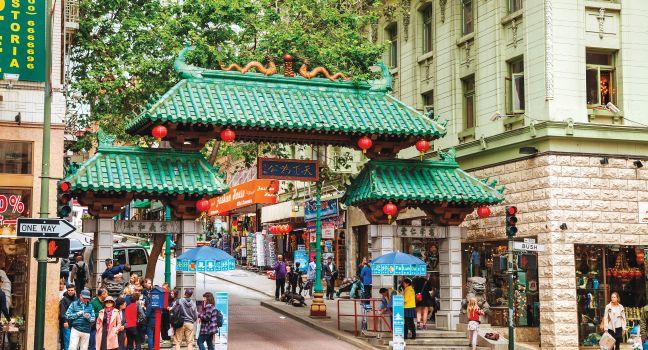Vallejo Steps
Several Russian Hill buildings survived the 1906 earthquake and fire and remain standing. Patriotic firefighters saved what's become known as the Flag House ( 1652–56 Taylor St.) when they spotted the American flag on the property. The owner, a flag collector, fearing the house would burn, wanted it to go down with "all flags flying." At the southwest corner of Ina Coolbrith Park, it is one of a number of California shingle–style homes in this neighborhood, several of which the architect Willis Polk designed.
Polk drew up the plans for the nearby Polk-Williams House ( Taylor and Vallejo Sts.) and lived in one of its finer sections, and he was responsible for 1034–1036 Vallejo, across the street. He also laid out the Vallejo Steps themselves, which climb the steep ridge across Taylor Street from the Flag House. The precipitous walk up to Ina Coolbrith Park and beyond is possibly the most pleasurable thing to do while on Russian Hill. If the walk up the steps will be too taxing, park at the top by heading east on Vallejo from Jones and enjoy the scene from there.




